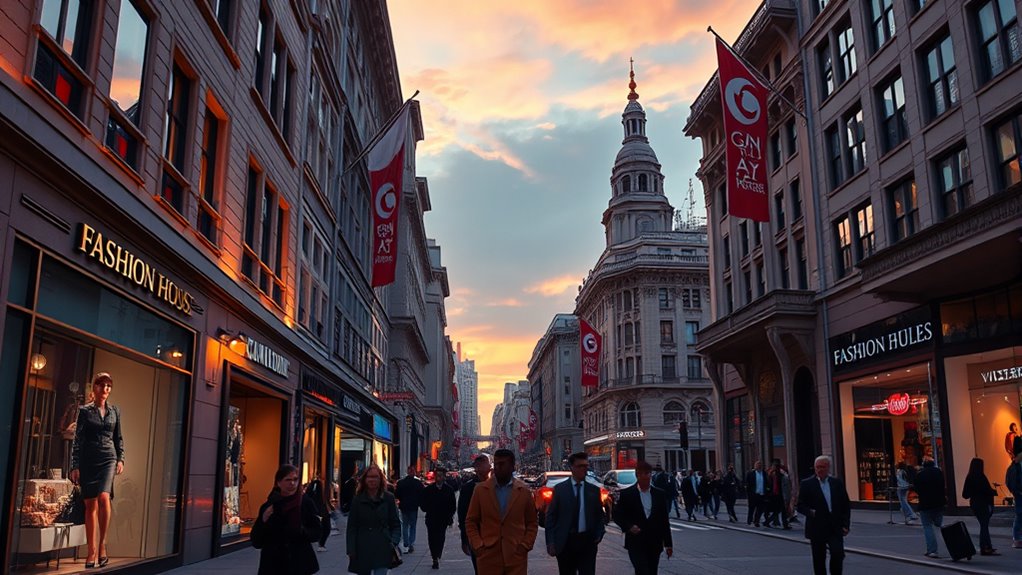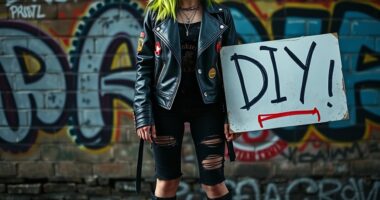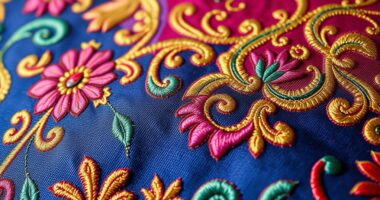Discover how governments in fashion capitals like Italy, France, and the UK are boosting industry growth through significant investments, sustainability initiatives, and innovation support. Italy, for example, allocates €250 million for 2025 to foster local brands, eco-friendly designs, and supply chain resilience. These strategies help fashion hubs stay competitive and sustainable on the global stage. To uncover how these efforts shape the future of the industry, keep exploring.
Key Takeaways
- Italy invests €250 million in 2025 to boost innovation, sustainability, and support local brands in its fashion industry.
- Governments promote eco-friendly and digital innovations, aligning with global sustainability goals like the UN’s Alliance for Sustainable Fashion.
- Nearshoring and regional investments are encouraged through fiscal incentives to strengthen supply chain resilience amid geopolitical challenges.
- Policies support digital transformation and challenger brands, aiming to keep fashion capitals dynamic, inclusive, and competitive.
- Overall, government funding and strategic initiatives foster growth, sustainability, and innovation in leading fashion hubs worldwide.

Have you ever wondered how governments influence the global fashion landscape? It’s a complex interplay of financial support, trade policies, sustainability initiatives, and demographic considerations. Countries like Italy are at the forefront, investing heavily in their fashion industries to ensure growth and stability. For 2025, Italy has allocated €250 million, roughly $260.8 million, specifically targeting the sector. This funding isn’t just about boosting production; it’s designed to foster innovation, improve resilience, and promote sustainability. About €100 million is dedicated to development contracts, with an additional €100 million for mini-development initiatives. These efforts aim to strengthen local brands, support business transitions across generations, and encourage collaboration within the industry.
Italy invests €250 million in fashion to promote innovation, sustainability, and industry growth through targeted funding and initiatives.
A significant portion of Italy’s funding focuses on sustainability and the green and digital transition. Governments recognize the urgent need to address environmental concerns, especially given the fashion industry’s hefty carbon footprint—responsible for around 10% of global CO2 emissions—and water consumption. Italy’s government has earmarked €15 million to support eco-friendly and digital innovations, pushing brands toward more sustainable practices. An extra €30.5 million is allocated to promote sustainability within the industry, aligning with global efforts led by organizations like the UN’s Alliance for Sustainable Fashion. These policies aim to encourage slow fashion—long-lasting, eco-conscious products—over fast fashion’s damaging cycle. This strategic investment aims to position Italy as a leader in sustainable fashion and attract eco-conscious consumers worldwide. Additionally, the fashion industry is increasingly exploring sustainable practices to mitigate its environmental impact.
Beyond Italy, government actions are shaping global trade and sourcing strategies. Increased trade barriers and supply disruptions since 2015 have prompted brands to diversify sourcing footprints. Nearshoring—moving production closer to consumer markets—is gaining popularity, with US and EU investments growing by 20% and 8%, respectively, over five years. Governments are actively supporting this shift through fiscal incentives, tax breaks, and regional investments, encouraging brands to produce domestically or in geopolitically aligned regions. They’re also fostering partnerships between industry players and regulators to enhance supply chain resilience, especially amid ongoing geopolitical tensions and environmental challenges.
Demographic shifts, like the rise of the “silver generation,” are influencing policy directions as well. Governments are increasingly supporting innovation and digital adoption to help newer brands cater to evolving consumer needs. Programs aim to boost digital transformation and market adaptation, giving challenger brands an edge over legacy players. This approach guarantees the industry stays dynamic and inclusive, embracing aging populations while attracting younger consumers. Altogether, these measures demonstrate how government support in fashion is multifaceted—driving economic growth, championing sustainability, reconfiguring trade, and fostering innovation—all of which shape the future of fashion capitals worldwide.
Frequently Asked Questions
How Do Governments Measure Success in Supporting Fashion Industries?
You can measure a government’s success in supporting the fashion industry by looking at environmental, social, and economic metrics. Track reductions in greenhouse gases, water use, and waste; monitor labor standards and workplace safety; and assess economic growth, employment, and export figures. Additionally, evaluate transparency through supply chain traceability, impact reporting, and stakeholder engagement to see how well policies drive sustainability and industry innovation.
Are Government Grants Available Specifically for Emerging Fashion Designers?
Sure, government grants for emerging fashion designers are practically everywhere—if you know where to look. You might find pilot grants from New York State’s Fashion Innovation Center, scholarships from the CFDA, or production support from local city programs. These funds aim to foster innovation, sustainability, and diversity. So, if you’re a new designer with big ideas, don’t hesitate—you could be the next to benefit from this often-overlooked financial lifeline.
How Does Government Support Impact Local Fashion Startups?
Government support helps your local fashion startup by lowering financial barriers through grants, subsidies, and tax incentives. It provides access to affordable workspaces, advanced manufacturing facilities, and skills training, making it easier to grow and innovate. Additionally, government-backed programs boost your market access through expos and export initiatives, helping you compete globally. These efforts foster a thriving, sustainable environment for your startup to succeed and make a mark locally and internationally.
What Are the Environmental Policies Influencing Fashion Sectors in These Capitals?
Imagine a vibrant tapestry of green threads weaving through your fashion industry. Environmental policies in these capitals set strict standards—London’s sustainability mandates, Paris’s circular economy initiatives, New York’s transparency laws, Milan’s eco-friendly innovation. You’re encouraged to adopt regenerative practices, transparent supply chains, and innovative materials. These policies act as guiding lights, shaping your designs and operations, pushing you toward a more sustainable future where style and responsibility walk hand in hand.
Do Government Initiatives Include International Fashion Events or Collaborations?
Yes, government initiatives actively include international fashion events and collaborations. You benefit from funding and support that promote designer exchanges, joint shows, and trade fairs to boost global visibility. Governments partner with international organizations, encouraging sustainable and ethical practices while fostering innovation. They also facilitate public-private partnerships, helping brands access new markets, exchange knowledge, and showcase collections internationally, ultimately strengthening the global influence of your fashion industry.
Conclusion
Did you know that over 70% of fashion capitals receive government funding to boost their industry? This support fuels innovation, attracts top designers, and maintains their global influence. By investing in fashion hubs like Paris, Milan, and New York, governments recognize the sector’s economic and cultural importance. So, next time you admire a stunning runway show, remember that behind the scenes, government support plays a vital role in shaping these iconic fashion centers.










